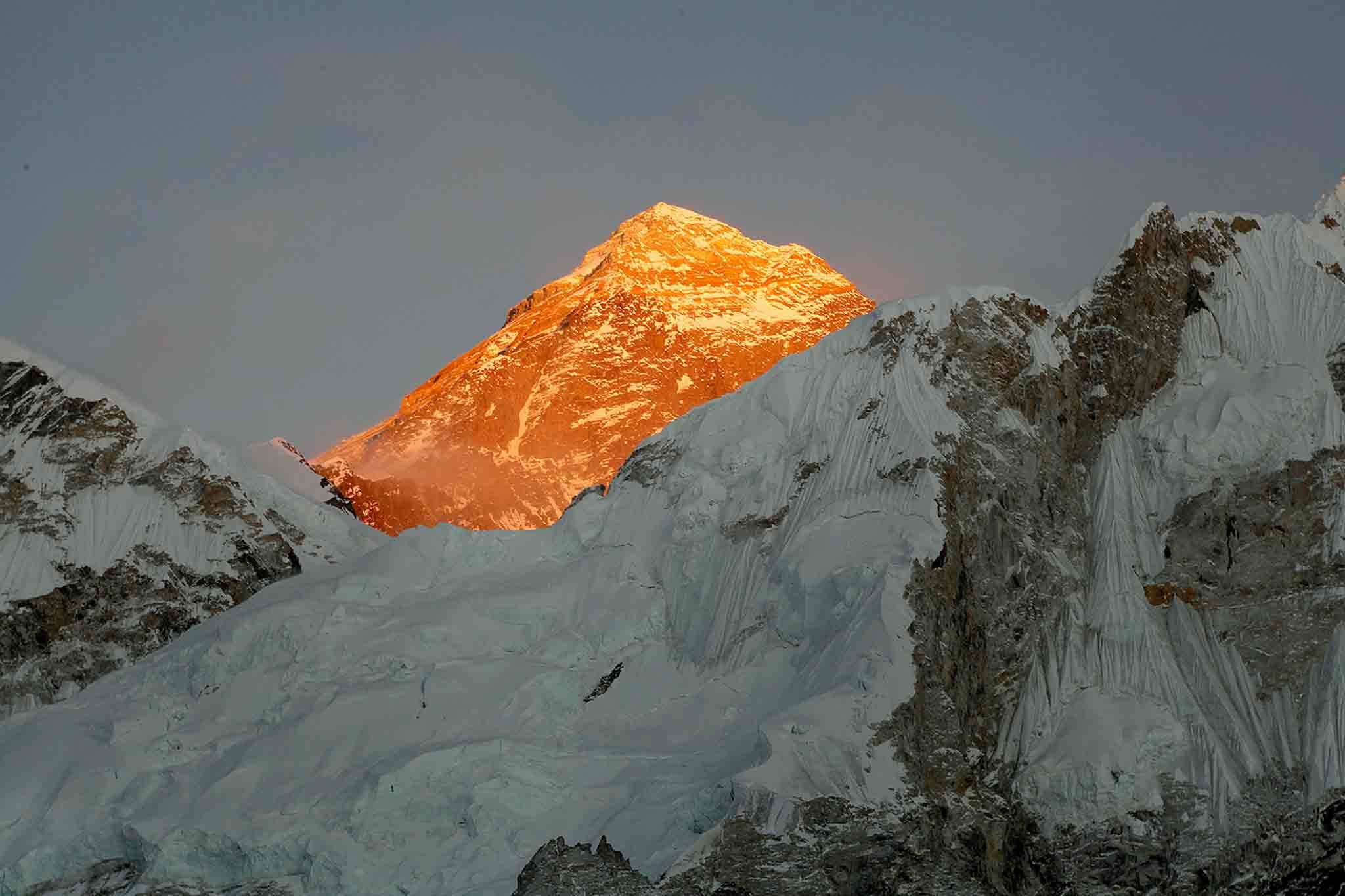By Binaj Gurubacharya / Associated Press
KATHMANDU, Nepal — The Indian man wept as a helicopter landed in Kathmandu carrying the body of his brother, one of hundreds of climbers who have died while attempting to climb Mount Everest.
The body had been left on the mountain for a year until last week, when a team of Sherpa climbers managed to recover it along with two others. But the high-risk expedition, financed with about $92,000 from the Indian state of West Bengal, has sparked heated debate in the mountaineering community about the morality of risking more lives to retrieve bodies from one of the most unforgiving places on Earth.
“It was a very dangerous operation,” West Bengal state official Sayeed Ahmed Baba acknowledged. “It was difficult to find Sherpas who were willing to go. But we had to do it for the families.”
On the helipad Sunday, Debashish Ghosh felt relief as he watched the Indian team unload the three bodies from the back of the chopper.
“We are finally able to bring him home,” he said of his brother, Gautam. “After we cremate the body there will be peace for his soul and relief to our family.”
Many in the mountaineering community said that peace of mind came with unacceptable risk. Climbers who attempt to scale the world’s tallest mountain know they could die from any number of challenges, including low oxygen, frigid temperatures, strong winds and steep falls. Asking others to carry down the bodies — often much heavier because they are frozen and covered in ice — puts more people in danger, they said.
“It is just not worth the risk,” said Ang Tshering of the Nepal Mountaineering Association. “To get one body off of the mountain, they are risking the lives of 10 more people.”
About 300 climbers have died since Everest was first conquered in 1953, and at least 100 — maybe 200 — corpses remain on the mountain. Most are hidden in deep crevasses or covered by snow and ice, but some are visible and have become macabre landmarks, earning nicknames for their plastic climbing boots, colorful parkas or final resting poses.
The most difficult bodies to retrieve are near the 8,850-meter (29,035-foot) peak in a low-oxygen area known by mountaineers as the death zone.
This is where the body of Gautam Ghosh was found last week along with the body of another Indian climber, Ravi Kumar, who died earlier in May after falling from the route on his way down from the summit. A third Indian man who died last year was recovered from the nearby South Col, the last camp at 8,000 meters (26,240 feet) before climbers make their final push for the summit.
Once the team of eight Sherpas reached the bodies, they had to break them from the surrounding ice, wrap them and tie them with ropes and slowly drag them down in high winds to Camp 2, a rocky expanse at 6,400 meters (21,000 feet) that is the highest helicopters can reach.
Expedition leader Eric Murphy, who last week guided his clients to the summit, criticized the retrieval and said he wouldn’t want anyone to risk their own life to bring his body down if he died on the mountain.
“It is a sacred place and a good place to rest,” Murphy said. “I would really question whether it is appropriate to risk so many to bring down one who is already lost.”
It is often Sherpas who are hired for retrieval expeditions. Climbers from the ethnic group that has lived for centuries around Everest have become an integral part of the Himalayan mountaineering world, and rely on the pay they can earn during the three-month climbing season to carry their families through the year.
Despite the danger of bringing down bodies, climbers are often asked to do so by the families of those who die, said Dan Richards of Global Rescue, a Boston-based agency specializing in mountain rescue.
Of the six people who died on Everest this year, only the body of an American doctor was left on the mountain.
“It becomes much more dangerous than simply climbing if you’re attempting to recover and transport a heavy load,” Richards said. A recovery team faces the same risks as climbers, including altitude sickness, edema, frostbite, hypothermia as well as accidents and avalanches.
But some believe the dangerous effort is still worth it.
“It is always better to bring down the bodies, which also leaves the mountain cleaner,” said veteran mountaineer Reinhold Messner, who was the first to scale Everest without bottled oxygen and climb the world’s 14 highest peaks.
Talk to us
> Give us your news tips.
> Send us a letter to the editor.
> More Herald contact information.

























